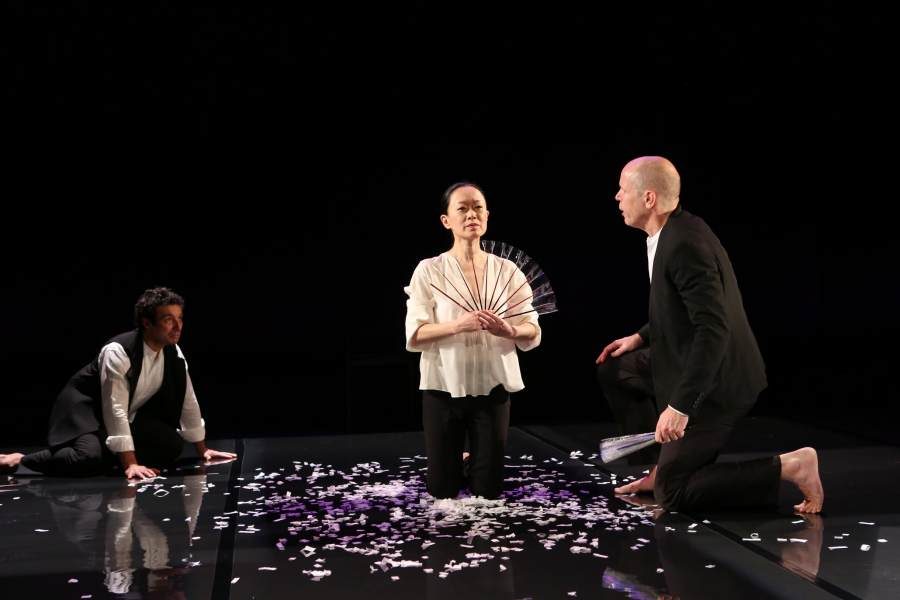

The SITI Company’s production of Yukio Mishima’s Hanjo completely concerns itself with the nuances and understanding of time and, critically, with the experience of time in the theater. Translated and directed by Leon Ingulsrud, the work makes time repeat itself, creates memory, builds revelation into the spectator's experience. It’s a theater experiment that is remarkably interesting if you have a taste for the stage as a Petri dish, or, perhaps, if you attend the theater as you would visit a museum.
The production performs Hanjo, a three-character play, three times with each actor rotating through each character. In the story, a young woman goes mad waiting for her lover, Hanjo, to return to her and is adopted by a lonely painter; when the lover finds her in Tokyo she does not recognize him, says he has a dead face. The story is based on a 14th-century noh play of the same name; it is a very good story, vivid, with good characters and themes of loneliness and regret that resonate through text and performance.
Naturally, the embodiment of each actor as each character provides three layers to the characters, three chances to live in one moment, three ways of communicating one idea; and each performer employs a distinct performance style, which absolutely contributed to these and other compelling factors. But this is nothing new. Daniel Fish captured it most efficiently in Eternal and the Bedlam company is having fun with it all the time; it’s a good idea that a lot of people are playing with. What is fascinating about this production of Hanjo is that one of the actors, Akiko Aizawa, performed in Japanese, while the two other actors performed in English.
Through this, the production was able to manipulate time, and the spectator’s experience of time. Akiko performed as the young woman, Hanako, in the first cycle, so when an English-speaking performer performed as her the second time, the house now had new information about the content of her first performance, shedding light on her actions. The spectators, in real time, experienced a revelation about an experience they had just some half hour prior. When Akiko played the 40-year-old painter the second round through the cycle, the performance in Japanese had within it a faint call of understanding. During the third cycle, when an English speaking performer played the painter, genuine memory arrived: we had the very present experience of ‘yes, now I remember, that’s the content and context to this moment’; as we relived all three events of one moment of a character, a multitude of times were affecting us.
I believe, deeply, in the nonverbal communication of the theater; and it is notable that a work so thoroughly of the theater has emphasized how primary language is to communicating clearly. But a good scientist does not choose the results of their experiment, they create the conditions, construct, and observe; and I suggest you do the same and attend this work.